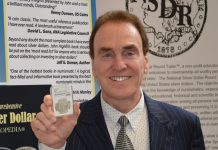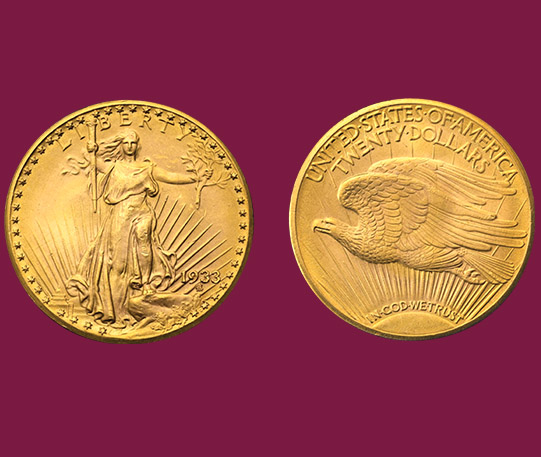
By R.W. Julian
When the 1933 Saint-Gaudens double eagle was sold at auction in 2002 for $7.59 million plus a $20 re-monetization fee, there was widespread speculation in the numismatic world as to the buyer. Numerous names and entities were floated as candidates for the honor, including the Mint itself, but in the end no one guessed correctly. The buyer turned out to be Stuart Weitzman, the iconic fashion footwear manufacturer and entrepreneur.
The present owner is selling this great rarity at Sotheby’s in June 2021 along with two other special items: a plate block of the famous 1918 Inverted Jenny air mail stamp and the unique British Guiana one-cent magenta. The three items together will bring many millions of dollars, but there is an added measure of honor that goes to Mr. Weitzman: the proceeds will be donated to worthwhile charities.
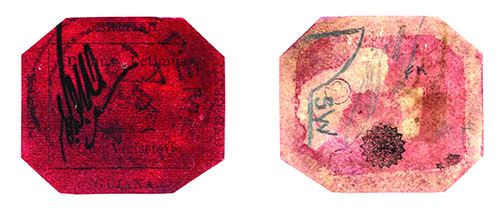
Over the past several years, there has been a continuing fascination with the 1933 double eagle. English dealer Stephen Fenton brought one of these coins into the United States in February 1996, with the intention of selling it to an American dealer, but the piece was seized by the U.S. government and was the subject of a lengthy legal dispute. An agreement was made by which the Fenton coin was declared legal and was sold at public auction in July 2002, the government and Fenton splitting the proceeds of the $7.59 million.
Informed numismatists believed that more of the 1933s were in existence, though just where they resided remained a mystery. In a bizarre event worthy of an Alfred Hitchcock movie, in September 2004, the owner of 10 more pieces voluntarily turned them over to the U.S. Mint for “authentication;” almost as strange is the fact that the Mint waited until August 2005 to release the news.
HUMBLE BEGINNINGS
The story actually began on March 4, 1933, with the inauguration of Franklin D. Roosevelt as U.S. president. The massive Depression then underway was eating away at the fabric of economic life in the United States, and the stability of the all-important banking system was of grave concern to the Roosevelt Administration.
President Roosevelt acted quickly to stem the rising tide of despair. On March 5, 1933, he issued emergency orders, using an obscure World War I statute, to shut down the banking system. There is an urban legend that all banks were shut down, but this is not true; the stronger banks were allowed to stay open but were limited in the amount of money that could be paid out.
One of the key points of the March 5 decree was that no gold coins could be paid out by the Federal Reserve system or any bank, a restriction that was lifted on March 13. However, the mint superintendents were specifically informed by telegram on March 6 that the right of depositors to bring gold to the mint and receive coins in exchange had not been affected.
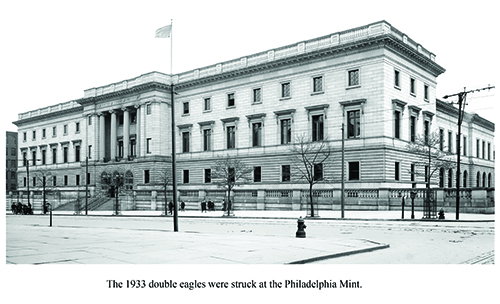
Eleven days after Roosevelt became president, the Philadelphia Mint recorded its first delivery of $20 gold pieces (double eagles), and over the next few weeks, some 445,500 pieces in all were delivered by the coining room officials to the superintendent of the mint, the act necessary to make the struck disks of gold into coin of the realm.
On April 5, Treasury Secretary William Woodin, at the request of the President, issued an order calling in all gold coins, although citizens were allowed to keep a small amount. At the end of 1933, a further Treasury edict banned private ownership of gold coins except by numismatists.
Ledgers of the Philadelphia Mint show that no record was kept of any double eagles being officially paid to anyone after the first delivery of March 15, and so far, as all were concerned, the only legal pieces remaining in existence were the two coins sent to the Smithsonian numismatic collection in 1934.
As early as February 1937, collectors began to acquire 1933 double eagles, mostly through Philadelphia gold dealer Israel Switt. The exact number that he sold over a period of years is open to doubt, though he told one person that he had acquired 25 of the coins. Over the next several years, these coins were openly bought and sold, with advertisements appearing in The Numismatist on several occasions.
No one paid much attention to 1933 double eagles until January 1944, when the well-known Stack’s firm of New York advertised that it would be selling at auction the gold collection formed by Colonel James W. Flanagan. According to the pre-sale information, Flanagan owned one of the “rare” 1933 double eagles. This announcement piqued the curiosity of Ernest Kehr, the coin and stamp columnist at the New York Herald-Tribune, who wrote the Mint Bureau asking how many had been actually issued. The letter wound up on the desk of Dr. Leland Howard, who could find no official distribution of the coins in question.
Officials at the Bureau in early 1944 either did not understand the law as it had existed in March 1933 or simply ignored facts that interfered with their conclusions. That such coins could have left the Mint legally in 1933 without a formal record being kept seems never to have been considered by key officials.
DRAWING ATTENTION
At any rate, Dr. Howard notified the United States Secret Service that the 1933 double eagles had been illegally removed from the Philadelphia Mint, and the Secret Service then swung into action. The Secret Service was never told of the numerous other coins of the United States, including the 1913 Liberty Head nickel, that really were illegal and that the Mint Bureau had simply ignored over the years. The Flanagan coin was seized, and there ensued a major investigation into how these coins found their way into private collections.
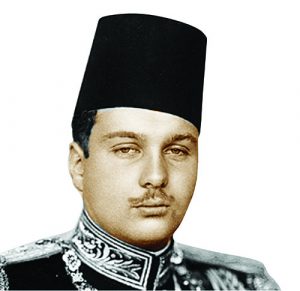
The problems with the Bureau claims of illegality and theft are serious and have never been addressed by the Treasury. Not even considering the well-known pieces like the 1913 Liberty Head nickel and the 1884–1885 Trade dollars, there are literally thousands of U.S. coins that are actually illegal. In particular, all minor proof coins struck before 1878 and proof coins before 1860, with minor exceptions, were not delivered according to law and are not actually coins, even though sold by the Philadelphia Mint as such.
Will the illegal proof coins of the 19th century ever be seized by the government? Of course not, but the point is that the 1933 double eagle is far more legal, by any standard, than these proof coins. The Mint Bureau did not inform the Secret Service about the numerous other coins that could have been legitimately seized as well. Nor did it inform the Agency that almost certainly the 1933s had been obtained by switching specimens for other dates, which would have been legal under the law at that time, even if no formal written record had been kept. Everyone came to the conclusion, without justification, that the coins had been “stolen,” which was never proven.
ARGUING LEGALITY
Another of the odd arguments produced by the Treasury about the legality of the 1933 pieces was the “fact” that these coins had not been “monetized.” In the 1920s, it was the practice, under Treasury Department rules (not laws), that earlier coins had to be paid out first. For example, if nickels dated 1926 were on hand in 1927, all of the 1926s had to be paid out before the 1927s could be issued. The government has maintained, without any justification whatsoever, that this “monetization” could take place only when the order was issued to release the new coins. Again, this was merely a rule of convenience and not mandated by law. The Treasury claims that no order was issued to release the 1933s, which is true, but irrelevant. The whole argument is moot anyway, because the U.S. Assay Commission in 1934 could not have tested the 1933 double eagles for weight and purity had they not been coins.
This rule has been twisted beyond all recognition to the claim that struck pieces were not technically coins until formally released by the Treasury for public use. It was, however, the case in 1933 – and since the first regular coinage in 1793 as well – that once the struck pieces are formally delivered to the proper official in a particular mint, they are coins.
It is worth noting that the 1964 Peace dollars were never legally coins because they had not been delivered according to law. It has long been rumored, of course, that employees were allowed to purchase one of these coins, but the government has always denied that this ever happened. Assuming that the government is correct about the pieces never being officially delivered, the pieces would be illegal to own under existing law. The same would be true for some of the fabricated mint errors smuggled out of the mints, as such pieces have not gone through the legal process to make them coins. Most error coins are legal.
After it had been “determined” that the 1933 double eagles had been “stolen,” it was not long before the Secret Service did more than just investigate. Not only was the Flanagan coin seized but several others were seized as well. A considerable number of collectors and dealers were interviewed to learn as much as possible. The last piece to be seized was voluntarily surrendered by famed collector Louis Eliasberg in 1952.
One collector, L.G. Barnard, did not take the seizure lying down and sued to recover his coin. In that 1947 contest, the government presented very one-sided evidence to the judge and failed to mention that it would have been legal to switch the coins in March 1933. Because Barnard did not have access to the necessary government documents, he lost the case, and since that time, the flawed Barnard decision has been used as the cornerstone of the government position that the coins are illegal.
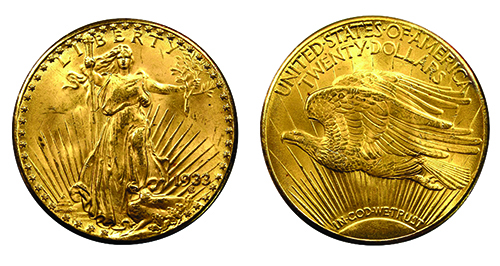
POLITICAL CONNECTION
The Secret Service investigation also uncovered politically sensitive material connected to the double eagles. One of the individuals interviewed was long-time dealer Stephen Nagy, who informed the agents that he had personally seen five of the 1933s in the possession of Treasury Secretary William Woodin, an avid collector who had co-authored the then-standard reference on U.S. pattern coins. This was an extraordinary charge but one that had to be handled with care because, in 1944, President Roosevelt was growing increasingly suspicious of certain of his associates and political enemies; had the Secret Service pressed the matter, there would have been problems, even though Woodin had died in May 1934.
How did Woodin get the coins? Almost certainly he switched coins of other dates but of full weight, for the pieces sent to Washington in March 1933 for testing, as was regularly done for all gold coinage; this had nothing to do with the Assay Commission, which met each February. The only requirement was that the correct amount of gold either had to be returned to Philadelphia or credit given in the Treasury records. As long as the quantity of gold was correct, no law had been broken in switching the coins. It is also believed by some numismatists that Assay Commissioners over the years, especially in the 19th century, switched coins to obtain interesting specimens from distant mints for their collections.
It is possible that Woodin, who would have had advance knowledge of the April 5 order calling in the gold coins, could have had someone at the Philadelphia Mint switch coins for him at the last moment, but the special assay pieces would have been an easier source.
Why would Woodin have kept his acquisitions a secret? Had he done so openly and the information had leaked out, it would have been highly embarrassing to the Roosevelt Administration, after the gold was called in on April 5, to have the Treasury Secretary himself “hoarding” gold. In a time when mere existence was an ongoing struggle for many families, the political fallout would have been significant.
Except for the seizures of coins through 1952, little was heard in collector circles about the 1933 double eagles as virtually no one outside the Treasury knew the background and the laws in force during March 1933. This silence ended in February 1996 when several Secret Service agents, with drawn guns, burst into a Waldorf-Astoria hotel room in New York and seized the 1933 double eagle in a sting operation from Stephen Fenton.
There followed a protracted legal dispute, during which the present writer examined 1933 archival records for the attorneys. The scheduled 2001 trial was never held, however, as a settlement began to be discussed in the fall of 2000 and was finalized in January 2001.
Even the settlement is a curious matter, however, as the government stated that the export license issued for the Farouk coin in 1944 was binding and, therefore, the Fenton specimen was legal to own.
In 2003, not long after the Fenton 1933 double eagle was sold at auction, the Langbord family discovered ten more of these coins. On the advice of an attorney, these coins were turned over to the United States Mint for authentication. The Mint did say that the coins were genuine but refused to return them on the questionable grounds that they had been stolen.
The seizure by the Mint led to a protracted legal battle in which the Langbords attempted to recover their rightful property. The matter was finally settled in April 2017 when the United States Supreme Court refused to hear arguments on the matter (“certiorari denied”) and the government retained the coins, storing them at Fort Knox




